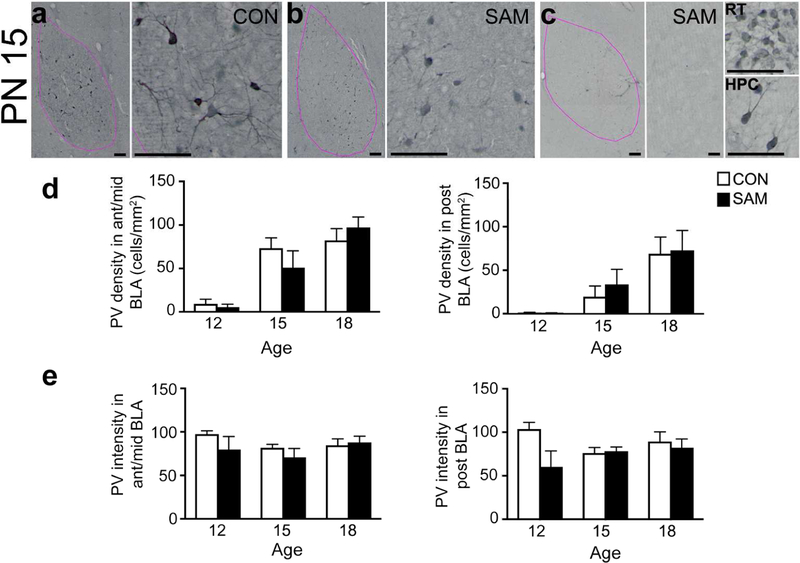Figure 6. PV ontogeny in the BLA.
PV cells were examined in the BLA of SAM and CON rats at PN12, PN15, and PN18. The left sides of panels a, b and c depict contour of the BLA in pink, which is distinguishable by the high density of PV immunoreactivity, in addition to the landmarks of the central amygdala medially, the lateral amygdala dorsally and the external capsule laterally (scale bars = 100 µm). All panels were taken at a magnification of 10X. Scale bars in first panel = 200 µm and apply to all subsequent whole BLA images; scale bars for the micrographs to the right of each panel = 20 µm. All of these micrographs were taken from the BLA of PN15 animals. PN15 represents a transitional time-point for abused litters: while half of the SAM pups (panel b) had PNN density that was similar to CON’s (panel a), half of the pups displayed an immature phenotype with very sparse PV+ labeling in the BLA (panel c). Prominent PV+ labeling in the reticular thalamus (RT, top right) and dorsal hippocampus (HPC, bottom right) confirms reduction in PV+ cell density is specific to the BLA. Panels d and e: The graphs show developmental changes in PV density (panel d) and PV intensity (panel e) of CON and SAM brains during pre-weaning ages, separately for anterior-to-mid (left graph) and posterior (right graph) levels of BLA. Bars represent mean and SEM. The small alphabets above the bars depict the following: a=significantly different from PN12 within the same rearing group; b=significantly different from PN15 within the same rearing group. PV intensity increased significantly from PN12 for the posterior BLA of the SAM group. CON groups exhibited no remarkable change in PV intensity across the pre-weaning ages. Neither the density nor intensity of PV labeling was detectably altered by SAM treatment. # indicates 0.05 < p <0.1 for comparison across the early life treatment groups.

